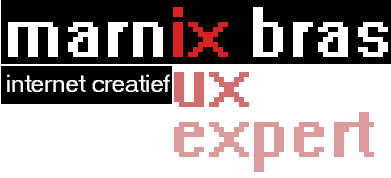Persuasion, Emotion and Trust design
 In juni dit jaar was ik te gast in New York bij Human Factors International, een wereldspeler op het gebeid van User centered design. Ik was daar voor een cursus “the Persuasion, Emotion and Trust-architect”, gegeven door de CEO van HFI, Eric Shaffer. Dit is onderdeel van de CXAcertificering. Een mooie oorkonde is het resultaat.
In juni dit jaar was ik te gast in New York bij Human Factors International, een wereldspeler op het gebeid van User centered design. Ik was daar voor een cursus “the Persuasion, Emotion and Trust-architect”, gegeven door de CEO van HFI, Eric Shaffer. Dit is onderdeel van de CXAcertificering. Een mooie oorkonde is het resultaat.
Waarom deze cusus?
In mijn werk bij Agis / Achmea ben ik bezig met het ontwikkelen van geslaagde online beleving waar bezoekers kunnen vinden wat ze zoeken, waar ze verrast worden, waar ze een transactie gewoon af kunnen maken, en waar ze vervolgens met een goed gevoel terugkomen. Service design met de gebruiker als middelpunt.
Usability: can do
De beleving van de gebruiker begint bij een goede Usability. (Usability gaat over gebruiksgemak: kan mijn bezoeker bepaalde taken vinden en uitvoeren). Maar naast het feit of de bezoeker is kán (can-do), gaat het toch vooral om of de gebruiker het wel wìl (will-do).
 Will do: Persuasion, emotion and trust
Will do: Persuasion, emotion and trust
Naast goede usability heeft de gebruiker argumenten nodig om een dienst of advies aan te nemen:
- Vertrouwen (Trust) om überhaupt te beginnen met het zoeken of uitvoeren
- Emotionele stimuli (Emotion) om dit met een goed gevoel te doen
- Overtuigende argumenten (Persuasion) om vooral door te blijven gaan.
 Gelukkig zijn we goed bezig, getuige het leuke blog van @petercreemers op https://www.werkenbijachmea.nl/Blog/post.aspx?ID=92 . Dat bied inspiratie voor mooie interaction-flows!
Gelukkig zijn we goed bezig, getuige het leuke blog van @petercreemers op https://www.werkenbijachmea.nl/Blog/post.aspx?ID=92 . Dat bied inspiratie voor mooie interaction-flows!——–ENGLISH————–
In June this year I was a guest in New York at Human Factors International , a global player in the field of user centered design. I was there for a course ” the Persuasion, Emotion and Trust Architect “, given by the CEO of HFI, Eric Shaffer. This is part of the CXA certification.
Why this cusus?
In my work at Agis / Achmea I’ve been developing successful online experiences where visitors can find what they want, where they will be surprised, where they can actually make a transaction, and where they then come back with a good feeling. Service with the user-centered design.
Usability: can do
The experience of the user starts with a good usability. (Usability is about ease of use: my visitor can find and perform certain tasks). But besides the fact that the visitor can (can-do), it is still mainly about whether the user wants it (will-do).
Will do: Persuasion, Emotion and Trust
Besides good usability, the user arguments to a service or advice to take:
- Trust (Trust) in the first place to start looking or run
- Emotional stimuli (Emotion) to maintain a good feeling to do
- Convincing arguments (Persuasion) to mainly to keep going.
A clear mission and vision as a designer to help you get your message clearly to bring convincing arguments.
